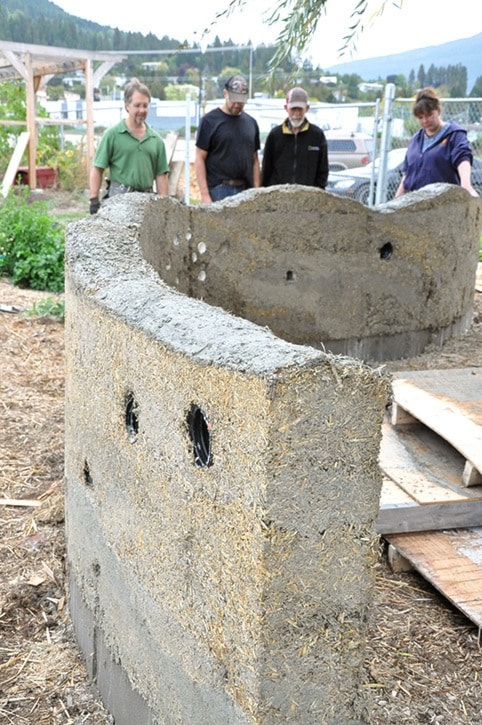If Roman architecture is any indication, a new wall at the Know and Grow Community Farm could still be around centuries from now.
On Saturday, a one-day workshop in the use of hempcrete — a concrete made of industrial hemp chips and fibre, lime and cement — resulted in a low wall being built in the corner of the College of the Rockies farm to create a learning area, as well as keep visitors from trampling delicate plants in the farm’s Food Forest.
“I want to do more natural building projects in the Food Forest, but I wanted to try out hempcrete and see its application in this area,” said co-ordinator Melissa Flint when the wall — which will eventually be coloured with natural pigments — was unveiled yesterday. “To have the opportunity to offer the workshop and showcase it is great.”
The workshop was presented by Jayeson Hendyrsan — a Vancouver Island resident who spent time in Creston in 1986 with the Canada World Youth exchange program — who recently hosted an eight-day workshop in Nelson.
He’s been working with hempcrete for several years, since he and his wife chose to build a home without the use of toxic materials, such as the petrochemicals used in vapour barrier. Beyond that, it’s fireproof, rat proof and earthquake resistant, and while a home costs about the same a traditional build, heating bills can be 40 per cent less.
It’s a similar process to what ancient Romans used in their construction, as French innovator Charles Rasetti discovered in the 1950s.
“He wondered why Roman concrete was still standing,” said Hendyrsan, who owns Hempcrete Natural Building and has worked on about 18 projects in B.C. and Alberta.
Many Tudor homes in Europe are having their walls redone with hempcrete, to keep the historic structures intact for several hundred more years.
It hasn’t yet been embraced as a construction method, with rebates on “green” building usually covering the addition of new technology rather than natural building methods.
“We’re not rewarded in our culture for economics,” Hendyrsan said. “They don’t give points for something that takes less.”
And if the other benefits of hempcrete construction weren’t enough, studies have shown that it ranges from carbon-neutral to carbon negative — as it hardens, the lime absorbs carbon dioxide.
“Basically, the lime wants to turn back into limestone,” Hendyrsan said. “It has huge economic potential.”

